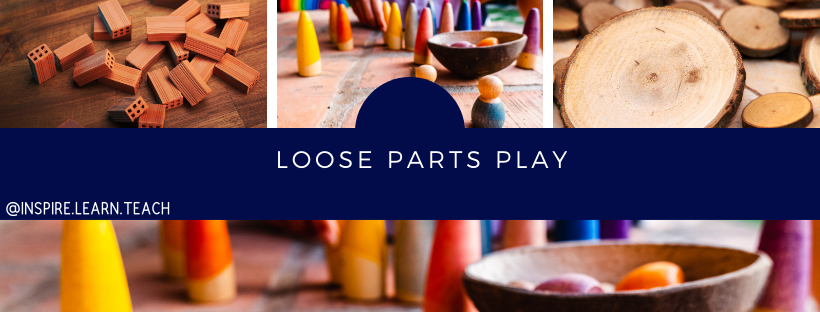How to … Loose Parts in play
What are Loose Parts?
Consider this, how often have you brought an expensive toy only for them to just play with the box or wrapping paper? Think about too, how often have you sat back and watched as you child played intently with the dirt, the leaves, the sand with no desire to leave? Or while you cook dinner that the plastic containers, pots, pans all end up on the floor and them deep in play? All of these are experiences with loose parts, the best part is that you already own these items, there is nothing to buy and so much learning to occur.
The notion of ‘loose parts’ encompasses open-ended materials and was first coined by Simon Nicholson in the 1970s. He believed that open-ended materials facilitated creativity and exploration as they provided space to move beyond one singluar use.
Loose parts are basically any loose, tactile materials and found objects that children can move about during play and exploration. They’re versatile, open-ended and can be added to any learning environment for children to adapt and to turn into anything their imagination allows. - Penny Groen
Loose parts can be natural, recycled, or synthetic materials. Loose parts dont come with a set of instructions as there is no specific purpose of each material and they can be used alone or combined with other materials.
“All children love to interact with variables such as materials and shapes; smells and other physical phenomena, such as electricity, magnesium and gravity; media such as gases and fluids; sounds, music and motion; chemical interactions cooking and fire, and other people, and animals, plants, words, concepts and ideas. With all these things all children love to play, experiment, discover and invent and have fun. All these things have one thing in common, which is variables or ‘loose parts’”
Loose Parts Benefits
There are a range of benefits of loose parts and personally this key here is the creativity of reponses and how open ended these can be. Research has demonstrated clear physical benefits for childre as well as some social and some creative benefits. Nature Play SA, explores benefits including the portability of items, child automny over their play, how easily loost parts are developmentally appropriate as children use them in ways that suit them, plus increases the variety and level of play (social, constructive, symbolic, dramatic, exploratory).
Problem Solving
Engineering
Creativity
Concentration
Hand-eye coordination
Fine motor development
Gross motor development
Language and vocabulary building
Mathematical thinking
Scientific thinking
Literacy
Social/emotional development
Loose Parts Play Ideas
Nature Hunt: This simple idea involves a scavenger hunt and some creating. It is always amazing what children will find and then create.
Formation: Make letters, images, shapes with loose parts
Explore some shadows: Take this outside and see what you can create with shadows
Add some play dough or water or paint!



